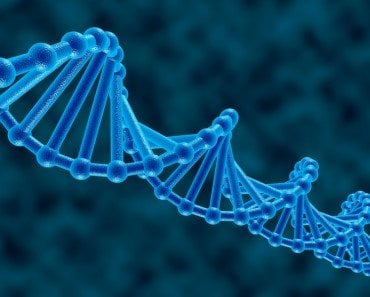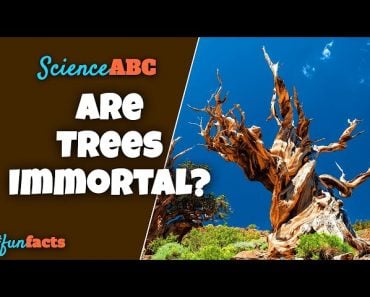Table of Contents (click to expand)
Deoxyribonucleic acid, or DNA, is a molecule containing instructions on how to make a living organism. Its structure and sequence instruct the cell on how to make proteins, which go on to carry out important functions of a cell. Many cells form tissues, many tissues form organs, and all the organs together form a living organism!
If there is one thing that both unites and separates all living organisms in the world, it is DNA.
Plants, animals and bacteria all contain the essential biological molecule known as DNA or deoxyribonucleic acid. DNA contains all the information required to build and maintain living organisms. You can think of it as nature’s very own top-secret instruction manual!
Recommended Video for you:
What Is The Structure Of DNA?
This manual is written in multiple combinations, but limited to just 4 letters: A, T, G and C. Each letter denotes a nitrogenous base: A for adenine, T for thymine, G for guanine and C for cytosine. Every living being has a huge supply of these 4 bases, each of which is attached to a pentose sugar and a phosphate molecule. Together, they are known as a nucleotide. These nucleotides are arranged in two long coiled strands like a hair braid. The bases on the two strands pair up with each other; A with T and G with C, forming base pairs.
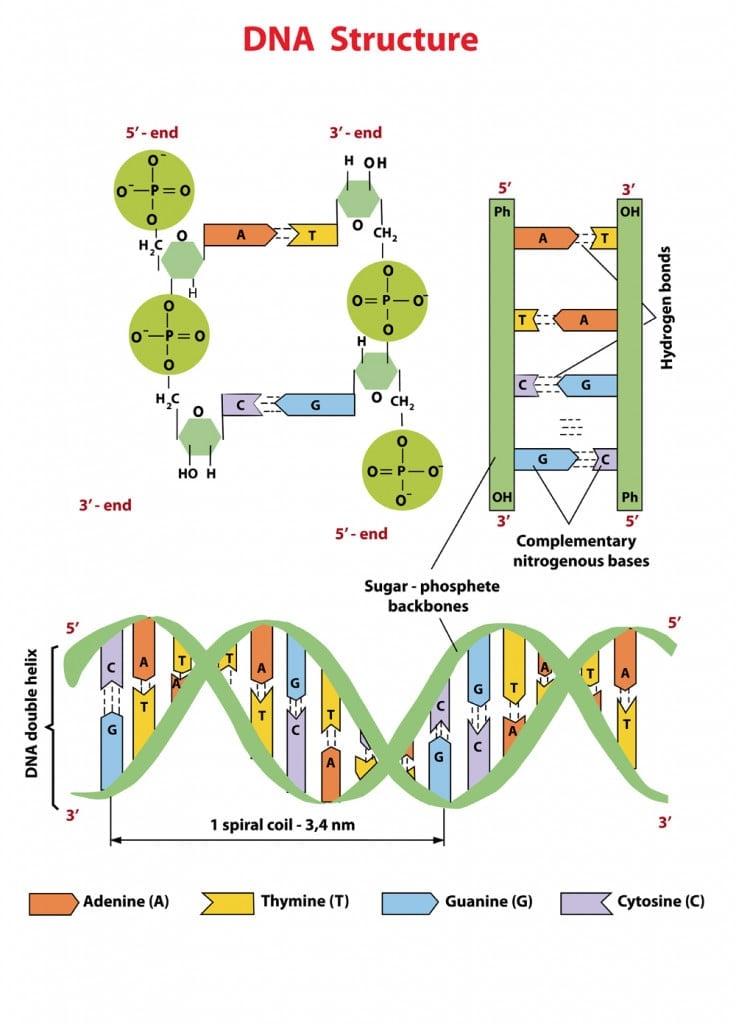
Thus, a DNA molecule is like a ladder that twists like a corkscrew, with the sugar and phosphate acting as the side rails and the base pairs acting as the rungs.
Where Do We Find DNA?
DNA is an extremely long molecule, so long that if all the DNA in a human was uncoiled and placed end to end, it would stretch 10 billion miles. That would be the same as a round trip to Pluto! However, it is also thousands of times thinner than a strand of hair. Locationally speaking, DNA is found inside the nucleus of each of the body’s cells, tightly packed into packages known as chromosomes.
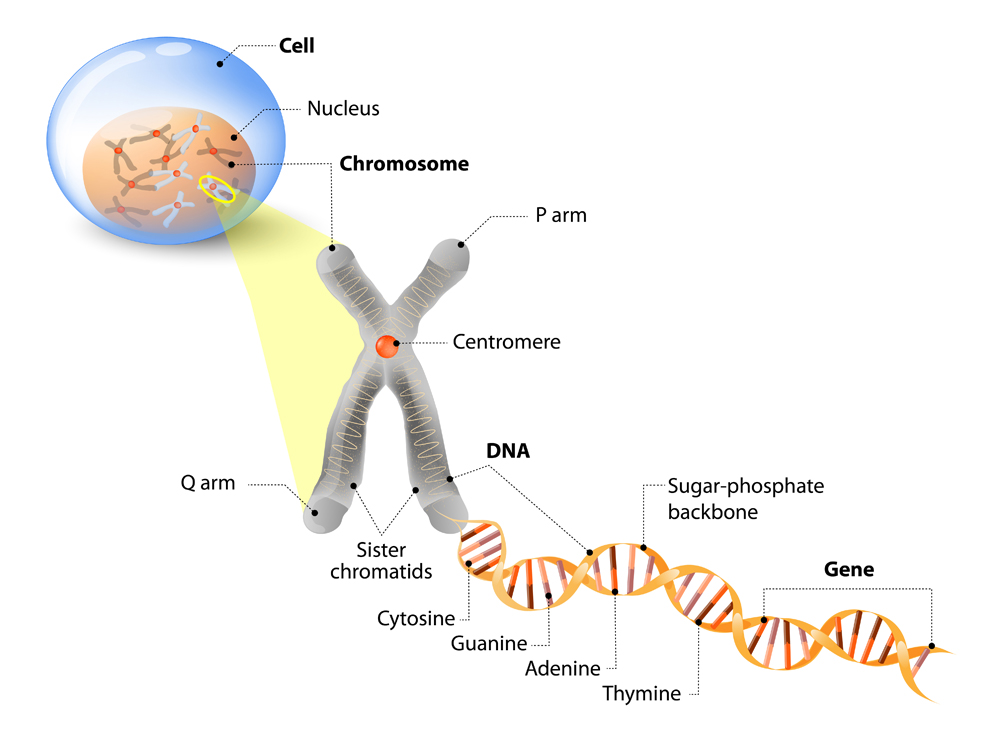
What Does DNA Do?
DNA is like a set of instructions that govern the arrangement of amino acids. It is composed of various 3 letter codes, called codons. These codons need to be interpreted in order to attain the correct amino acid. Think of it as a password that, if entered correctly, will give you an amino acid—like a tiny Lego block! When put together, all these blocks give rise to a protein. This is why amino acids are also known as the “building blocks of life”.
However, to understand exactly how codons are decoded, we need to travel to the HQ.
DNA is stored in the cell ‘HQ’, the nucleus, where various ‘secret agents’ called enzymes get their hands on this important document (DNA). They need the information stored in the DNA to build important machines known as proteins.
Unfortunately, these agents face a difficult hurdle. The raw material (amino acids) and the factory (ribosome) required to build the machines (proteins) are both found outside the HQ (nucleus). That may not initially seem like a problem, as the DNA could simply be taken outside the nucleus, right? However, that’s the problem… since the DNA is such a valuable ‘document’, it cannot leave the HQ!

Instead, bits of the information from the DNA are copied into smaller, single-stranded molecules known as messenger ribonucleic acid (mRNA). The mRNA travels out of the HQ and finds its way to the protein factory, which is the ribosome. In the ribosome, the instructions for amino acid attachment encoded on the mRNA are interpreted to form a protein. The amino acids are attached one after the other like beads in a necklace until the process is terminated, as determined by the instruction codes.
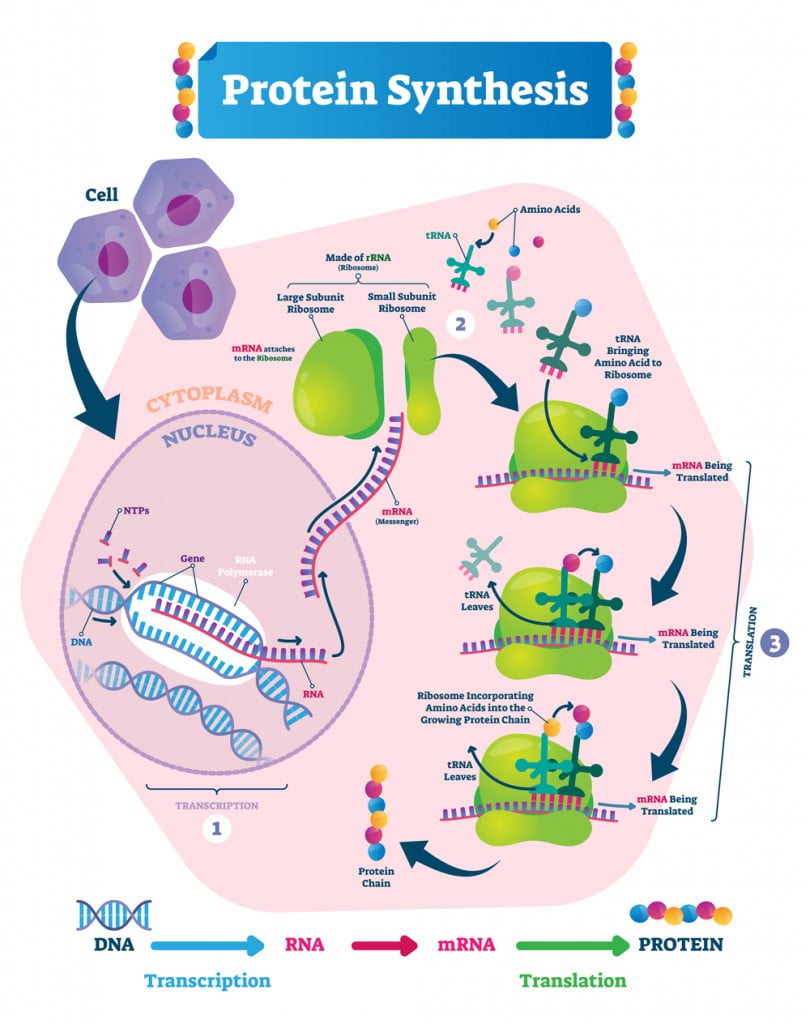
The newly built proteins, with a few changes along the way, go on to make up cells, which in turn form tissues, which then form organs. When combined, all these organs form a living being.
Now, the type of living being formed is entirely dependent upon the sequence and number of the aforementioned DNA bases. The complete instruction manual for human beings, for example, has 3 billion letters or bases. Around 99% of these bases are the same in all people. It is only the remaining 1% that makes each of us unique.
Where Do We Get Our DNA?
We inherit our DNA from our parents, who got their DNA from their parents, who got it from their parents and on and on all the way back a few billion years ago when the very first life form appeared. This is why you may have blue eyes like your father or curly brown locks like your mother. Several diseases like sickle cell anemia, cystic fibrosis, hemophilia, and others can also be passed down to offspring through the DNA.
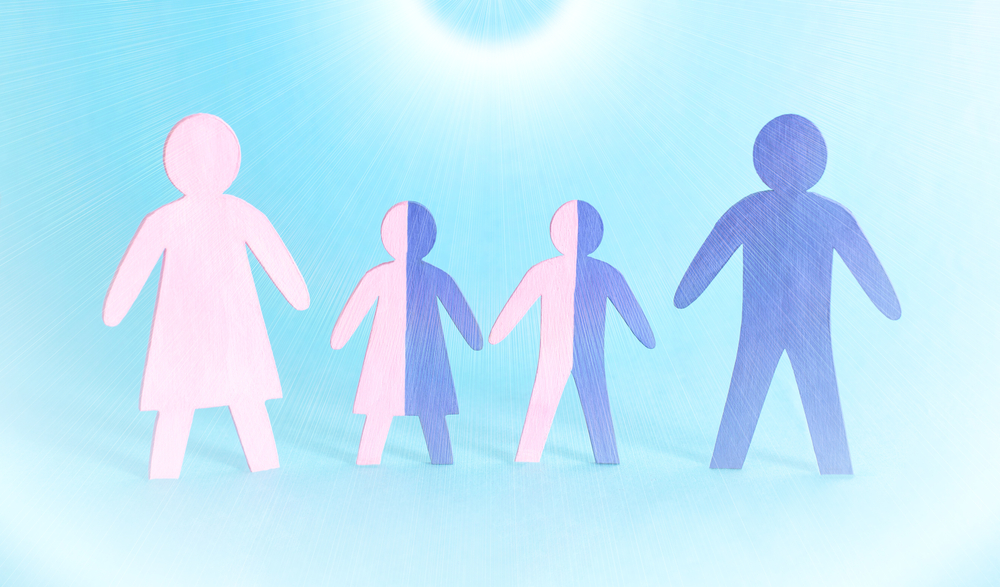
No matter how versatile this single molecule is, it’s still very fragile! DNA has a half-life of 521 years, meaning that the oldest organism we can clone cannot be more than 2 million years old! While it may disappoint some movie fans, this means that Jurassic Park will likely remain a work of fiction forever!





